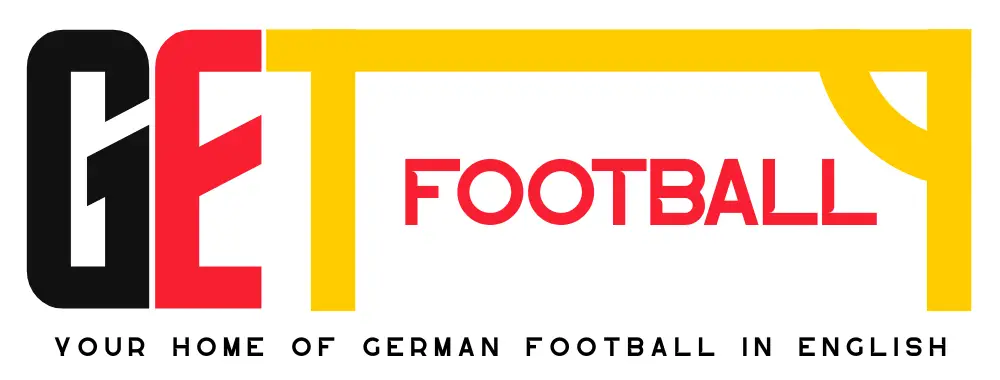Football, the world’s most popular sport, captivates billions, weaving through continents and cultures with unrivaled fervor. Its universal appeal, a testament to its thrilling unpredictability and communal spirit, turns stadiums into temples and weekends into global rituals. With this widespread adoration comes a substantial economic ecosystem, where choosing the right football league to follow or invest in isn’t just a matter of allegiance, but a strategic decision that can lead to significant profitability. Navigating this choice demands more than just passion; it requires an understanding of the complex interplay between market dynamics, audience engagement, and competitive quality. As leagues vie for viewership and investment, their global footprint and financial clout become pivotal in determining their profitability and appeal to stakeholders. Thus, delving into the world of football is not just embracing a sport but engaging with a global market where the stakes are as high as the passions it ignites.
The Criteria for Choosing a Profitable Football League
Selecting a profitable football league transcends mere geographical loyalty; it’s a nuanced analysis that blends economic robustness with competitive integrity. The discerning eye looks for a league that not only thrills on the pitch but also delivers off it, offering a blend of financial stability, competitive excitement, widespread appeal, and top-tier talent.
Economic Factors
A league’s financial health, underpinned by TV rights, sponsorships, and ticket sales, dictates its economic viability. Heavyweights like the English Premier League excel, commanding billion-dollar TV contracts that dwarf others, making it a goldmine for stakeholders. Sponsorships, too, play a crucial role, with leading leagues boasting partnerships with global brands, amplifying their financial clout. Ticket sales, while varying across leagues, often correlate with stadium capacities and fan engagement levels. Moreover, the prize money and financial incentives for clubs, often overlooked, are pivotal. They not only ensure club sustainability but also fuel competitiveness, driving teams to perform better to reap these financial rewards.
Competitive Balance
The allure of a league often hinges on its competitive balance—the unpredictability of match outcomes and the number of genuine title contenders. Leagues like the Bundesliga, where the dominance of a single team raises questions about its competitiveness, contrast with the Premier League’s more unpredictable nature, where multiple teams vie for the championship. Historical data on league winners and the distribution of championship titles reveal much about a league’s competitive health, influencing its attractiveness to fans and investors alike.
Market Popularity and Fan Base
The global and regional fan base sizes are barometers of a league’s market popularity. This popularity translates into substantial merchandise sales and an enhanced brand value for teams, fostering a lucrative market for memorabilia and fan-driven revenues. Leagues with a global following, such as La Liga, benefit from international tours and a widespread fan base, bolstering their market presence and financial prospects.
Player Quality and Star Power
The caliber of players and the presence of international stars in a league significantly affect its marketability and financial success. Star players like Lionel Messi or Cristiano Ronaldo not only elevate the quality of play but also bring a global following, boosting league viewership and attracting lucrative deals from sponsors and media rights. Their impact extends beyond the pitch, enhancing the league’s attractiveness and revenue, akin to the star-studded appeal of CasinoFieber in the gaming world, where quality and star power draw in crowds.
The profitability of a football league is a multifaceted affair, influenced by its economic muscle, competitive nature, fan base loyalty, and the quality of its stars. These factors, when harmoniously aligned, create a football league that is not only exciting to watch but also profitable to invest in.
Analysis of Top Football Leagues
Exploring the world’s elite football leagues unveils a fascinating landscape of economic prosperity, global influence, and fierce competition. Much like the benefits of 5-Second Rule-Free Casinos for online players, these leagues offer uninterrupted excitement and high stakes.
English Premier League (EPL)
The EPL stands as a titan in the football world, with an economic impact stretching across the globe. Its competitive nature is legendary, offering nail-biting seasons where multiple clubs vie for the title. This league is not just a football competition; it’s a global brand that attracts viewers and sponsors worldwide, mirroring the allure of top-tier online gaming platforms.
Notable teams and players:
- Manchester United: A storied club with a global fan base and a history of success.
- Liverpool: Known for passionate supporters and a dynamic style of play.
- Kevin De Bruyne (Manchester City): A midfield maestro, pivotal in his team’s domestic and European campaigns.
- Harry Kane (Tottenham Hotspur): A prolific striker, consistently among the league’s top scorers.
Spanish La Liga
La Liga, with its flair and technical brilliance, captures hearts globally, marking significant revenue details and a massive fan base. Its clubs are not just teams but global emblems of footballing heritage, wielding substantial international influence. The league’s style and player quality often draw comparisons to the high-caliber experience found in premier online casinos, where skill and strategy reign supreme.
Key clubs and star players:
- Real Madrid: A club synonymous with success, home to some of the game’s greatest legends.
- Barcelona: Known for a unique playing style and producing world-class talent from its famed academy.
- Lionel Messi (Formerly of Barcelona): A name that stands above in the football world, embodying technical prowess and scoring ability.
- Karim Benzema (Real Madrid): A forward known for his technical skills and crucial goals.
German Bundesliga
The Bundesliga is renowned for its solid financial health, high fan engagement, and competitive balance. Clubs in this league are well-managed and financially robust, ensuring an exciting competition where youth development is also a key focus.
Prominent teams and footballers:
- Bayern Munich: The most successful club in Bundesliga history, with a massive fan base.
- Borussia Dortmund: Known for passionate supporters and promoting young talent.
- Robert Lewandowski (Former Bayern Munich): A goal-scoring machine and one of the league’s recent icons.
- Erling Haaland (Former Borussia Dortmund): A young star known for his incredible scoring prowess.
Italian Serie A
Serie A, with its rich history and high-quality football, combines economic stability with a deep-rooted football culture. The league’s teams are not just football clubs; they are institutions with legacies that contribute to the player’s quality and the league’s global appeal.
Leading clubs and standout players:
- Juventus: A club with a storied history and numerous domestic titles.
- AC Milan: Known for its European successes and global fan following.
- Cristiano Ronaldo (Former Juventus): Brought star power and immense skill to the league.
- Romelu Lukaku (Former Inter Milan): Made a significant impact with his scoring ability.
French Ligue 1
Ligue 1 is experiencing rapid market growth, thanks to financial investments and a focus on developing local talent, making it increasingly competitive on the European stage.
Top teams and marquee players:
- Paris Saint-Germain (PSG): Financially the most potent club in France, attracting world-class talents.
- Olympique Lyonnais: Known for excellent youth development and consistent European performances.
- Kylian Mbappé (PSG): One of the world’s most exciting talents, known for his speed and scoring ability.
- Neymar Jr (PSG): A global football icon whose presence has elevated the league’s status.
These leagues illustrate the pinnacle of football excellence, where economic might, competitive balance, and star power converge to create an unparalleled sporting spectacle.
Emerging Football Leagues and Their Potential
As the global football market evolves, emerging leagues are gaining traction, reflecting significant economic growth, expanding fan bases, and increasingly competitive landscapes. These leagues are not just catching up; they’re setting new benchmarks in the sport’s commercial and competitive dimensions.
Major League Soccer (MLS) in the United States
MLS exemplifies a league on the rise, with substantial economic growth and an expanding fan base, especially in cities like Atlanta and Seattle, where football culture is burgeoning. Financial investments have surged, attracting international stars and boosting the league’s profile. The competitive landscape is also evolving, with more teams capable of winning the championship, enhancing the league’s overall unpredictability and appeal.
Chinese Super League (CSL)
The CSL has made headlines with its aggressive financial investments, luring big-name players from Europe and South America, which has spiked its market popularity and global profile. This influx of foreign talent has raised the quality of play and intensified the competitive nature of the league, making it a significant player on the global football stage.
Other Notable Leagues
Several other leagues around the world are showing potential for growth and increased competitiveness:
- Dutch Eredivisie: Known for producing top-class talent and playing an attractive style of football, the Eredivisie continues to be a hub for developing young stars and competitive teams.
- Portuguese Primeira Liga: With clubs like Porto and Benfica, the league maintains a strong presence in European competitions, showcasing the league’s quality and competitive nature.
- Brazilian Serie A: A powerhouse in South American football, it not only contributes significantly to the national talent pool but also demonstrates strong fan engagement and competitive balance.
These emerging leagues are becoming increasingly significant in the global football narrative, offering new opportunities for investment, talent development, and fan engagement. Their growth and potential signal a shifting landscape where the love for football knows no bounds, and the pursuit of excellence continues to drive the sport forward globally.
Conclusion
In the intricate mosaic of global football, selecting the most profitable league is akin to curating a fine art collection, requiring an astute balance of economic vitality, competitive zeal, fan fervor, and stellar talent. The economic landscape, with its revenue streams and financial incentives, sets the foundational tone, while competitive balance injects unpredictability, fueling fan engagement and marketability. The allure of star-studded lineups not only enhances the spectacle but also drives financial success, mirroring the dynamics of high-stakes arenas like the casino world.
Looking ahead, the global football market appears poised for transformative growth, with emerging leagues challenging established hierarchies and reshaping the economic contours of the sport. The infusion of capital, coupled with digital expansion, promises to democratize the game’s profitability, offering a broader stage for leagues to showcase their uniqueness and appeal. As these trends converge, the football landscape is set to become more dynamic, where strategic acumen in league selection will be paramount, blending passion with profitability in the beautiful game’s evolving narrative.










